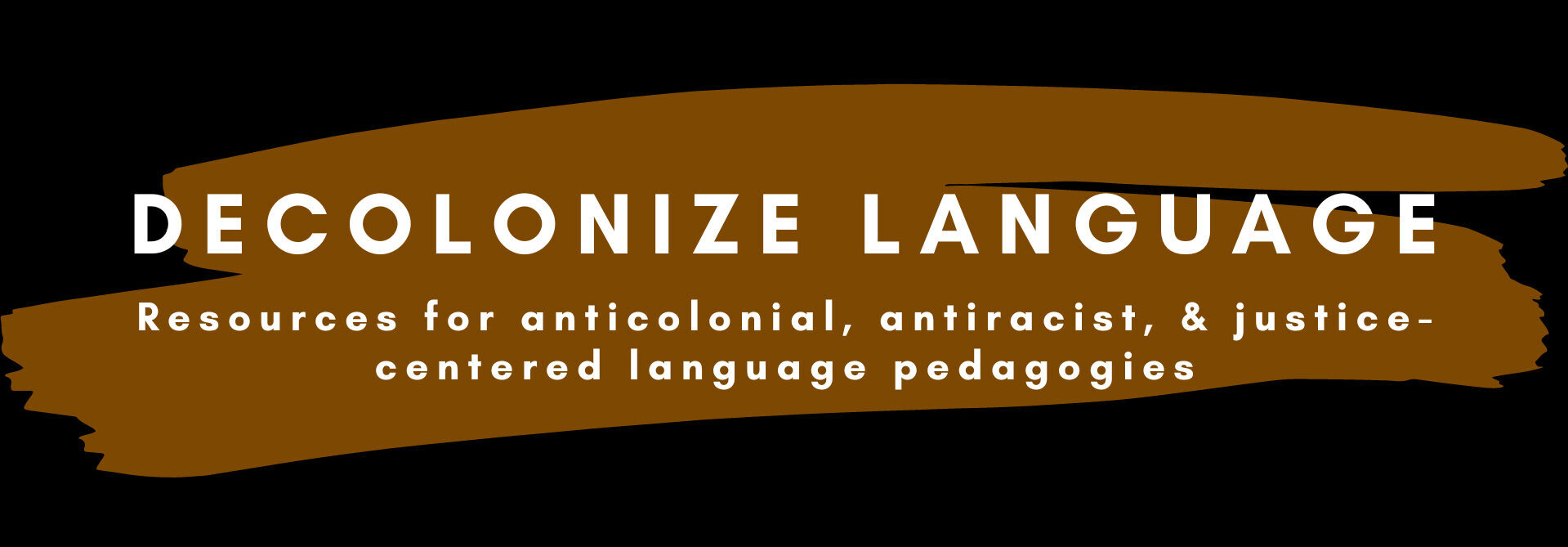
Comprehension of Authentic Resources
One of the easiest, most effective, and seamless ways to integrate social justice is careful, intentional selection of resources. You can be certain that individuals from marginalized communities are already thinking deeply about some of the topics and perspectives that you may be considering integrating into your class for the first time. I recommend selecting open resources that present counterpoint and counternarratives and that don’t “oversimplify diversity or gloss over controversy and inequality” (Johnson & Randolph, 2015, p. 37). In many ways, if we just select resources that focus on how diverse people critically engage with various issues, justice-oriented experiences will come about much more naturally in our classes. These “authentic” resources are often not learner-centered and may not have the pedagogical support necessary for students to understand them. (See Simonsen (2019) for a more detailed discussion on authentic texts, learner-centered texts, and non-learner-centered texts). Thus, many students may find such resources to be too challenging. In this post, I will share a few of the strategies that I use for selecting resources and facilitating language comprehension with novice and intermediate learners in particular.
Simple Resources Pack a Big Punch
Songs are great due to their short length and predictable patterns and rhymes. Infographics are great because the language is limited and includes visual support. Blog posts written by members of the speech community of the language studied are another option. Finally, although they may not be the traditional resources we’re used to seeing, memes and social media posts (e.g., Twitter and Instagram) are good options as well. Such posts usually contain accessible language, and even in cases where the language is too advanced, it usually is easy to provide adequate support due to the limited amount of language that students have to process.
Direct Students to Meaningful Details
When confronted with a complex text, students may often feel discouraged or frustrated if they are not able to understand the text well enough to adequately engage. I have found that there are several strategies that can be employed to guide language learners to focus on the most important details. These might include:
- Develop simple true/false or multiple-choice comprehension questions that draw students’ attention to the most important details. One-word answer, as described by Meredith White on Twitter, is another option.
- Have students express a reaction to the text via a mock tweet (100-200 characters) or a meme via Jamboard or Padlet.
- Ask students to write a title for each paragraph or section of the text.
- Have students develop an original caption for any images that accompany the text.
- Ask students to simply highlight what they believe to be the three most important passages of the text.
- Develop an embedded reading. Click here to view an example of an embedded reading for the song “El Niágara en bicicleta.”
- For absolute beginners, only read the title, section headers, and/or picture captions. Then, provide as much additional contextual information as possible (at the students’ language level) to facilitate comprehension.
Make Comprehension an Interactive, Collaborative Endeavor
The onus of comprehending and processing texts should not always fall on the individual student. Below, I highlight three tools that I use to make reading comprehension a process-oriented collaborative activity. The beauty of these tools is that they work well in a variety of course modalities (face-to-face, hybrid, and online synchronous/asynchronous).
- EdPuzzle. I use this tool to divide video and audio resources into manageable chunks. I then incorporate checks for understanding, contextual information, and reflexion questions throughout. This creates an immersive, interactive experience as the student listens to or views the resource.
- Google Docs. I use Google Docs with texts to create a shared, collaborative reading experience. First, I upload the text as a Google Doc. Then, I go through and annotate various sections. I might provide vocabulary support, give background/contextual information, post my thoughts/reactions, or pose comprehension and reflection questions. Next, I update the sharing settings of the document so that others can view my comments and leave their own comments. Students are then able to annotate the text directly and are encouraged to upload their own original reflections and questions as well. To prevent the document from becoming overloaded with comments, this works best when students are divided into groups of about five to eight students each, and each group has its own version of the document to annotate. While Google Docs works fine for my purposes (all of my students have Google accounts), other tools like Perusall were created specifically for this purpose and offer more functionality.
- VoiceThread. I use VoiceThread with audio/video resources in the same way I use Google Docs with written resources. Once the recording is uploaded, students can engage in asynchronous conversations (via text, video, or audio) in response to prompts provided by the instructor throughout the recording or topics/questions raised by fellow classmates. Again, this works better when students are divided into small groups and each group has its own VoiceThread presentation to work with.
No matter which strategies you use, the main takeaway is to understand that with the right strategies, any text can be adapted to any learner skill level. Do not let the thematic or linguistic complexity of so-called “authentic” resources prevent you from incorporating them into your classes. In many cases, such resources provide the points of entry to study critical content from traditionally marginalized perspectives.
What other strategies have you found to be successful in your classes?
References
Johnson, S. M., & Randolph, L. J., Jr. (2015). Critical pedagogy for intercultural communicative competence: Getting started. The Language Educator, 10(3), 36-39.
Simonsen, R. (2019). An analysis of the problematic discourse surrounding “authentic texts.” Hispania 102(2), 245-248.
Note: This post was originally published as a blog entry for the Center for Open Educational Resources and Language Learning (COERLL) on August 8, 2021.

